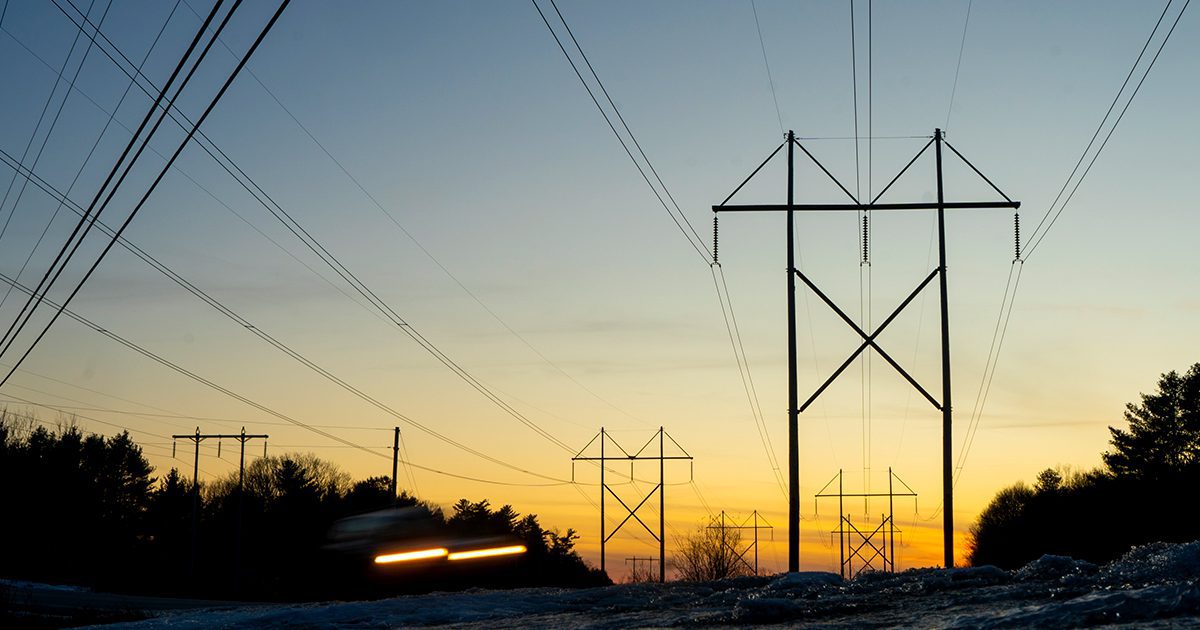Ask anybody about the effects of inflation and it’s highly likely their response will have something to do with energy.
Just about everyone has paid a much higher bill for gasoline and electricity since the first of the year than they were paying just months earlier. The sharp increase was a shock.
Energy prices are early and strong signals of inflation. In fact, changes in energy prices are so abrupt and so large that the Federal Reserve excludes them from its analysis of inflation.
Blame for inflation is usually placed on government, and people expect it to bring prices under control almost as quickly as they appeared. The blame is probably misplaced, but the expectation of government help is understandable.
Maine’s quick fix
This time, Maine government offers a quick fix. Almost all taxpayers will receive a payment from the state of $850.
The payment is labeled as assistance in dealing with Covid-19. But the federal government had already stepped up handsomely with cash for Covid. In fact, part of the state’s aid results from federal payouts to it and from tax revenues from Maine taxpayers who were less harmed by the virus than had been expected.
That means Maine’s payments may mostly help people pay higher energy bills. That’s added to a previous program to support low-income customers of CMP and Versant.
In short, Maine government has provided first aid for high energy costs. The federal government has been lowering gasoline costs by tapping the Strategic Petroleum Reserve and allowing higher ethanol content in auto fuel.
Government action as prices shot up has been relatively swift. But the measures have done little to lower energy costs. Their goal has not been to decrease consumption or to promote the environment. Their focus has been on simply paying higher bills.
In the short term, government has left conservation and efficiency to individuals. To control their energy costs, people have been switching from incandescent and florescent lighting to LEDs. And they have been driving less. Their sound logic is that if something costs more, you buy less of it.
Structural change
State policy is mainly aimed at encouraging structural change that will reduce dependency on fossil fuels used for vehicles or home heating.
The Governor’s Energy Office is a policy agency. The prime agency to promote change is Efficiency Maine. It pushes weatherization to tighten housing, the use of electric or hybrid vehicles and replacing home heating oil and propane with heat pumps. If widely implemented, such measures could change the state’s energy profile.
But their progress is impeded by several factors.
First, they are all capital projects that require, well, capital and a good bit of it. The life-cycle cost of any of these measures can be less than simply staying with the traditional energy economy. But it may be tough for many people to face the initial outlay instead of the pay-as-you-go methods of the usual costs. And the beneficial pay-offs may take years.
Efficiency Maine may offer or promote financing help to encourage people to undertake capital projects, but the cost, even with aid, may be daunting for many.
A second problem in the currently tight labor economy, making it difficult to find people to install insulation or heat pumps. Help wanted signs are not likely to disappear soon and some improvements depend on using trained installers. There aren’t enough of them.
The third complication is the lack of product. Electric vehicles are hard to find and their prices reflect the high demand. Rebates or tax breaks may not matter when you cannot afford or even locate the product.
In short, despite positive government efforts, structural improvements are likely to be slow, expensive and economically vulnerable to labor and supply.
Given the immediate situation and the need for improved government action, what can the State of Maine do to lower cost of energy and, by lowering consumption, gain environmental benefit?
Short-term action
Here are four measures worth early attention:
1. Government should step up its own conservation efforts and publicize them to inform the public and to encourage similar business and individual action.
2. Revive and promote the GOMAINE program far more actively. This program offers rideshare and vanpooling. Outreach to employers, including the state government itself, should be sharply increased. Once again, improved public promotion would help.
3. Subsidize public transportation on the condition of expanded schedules. The state should consider such subsidies as a cost of its energy policy even if the supported systems will never break even.
4. Greater public outreach (have you seen any state energy people at county fairs?) is needed to promote improved personal energy use. Targeted action could include controlling unused electric heating and appliances like residential water pumps, computers and household lights.
Institutional change: reform at three state agencies
During the 1970s and 1980s, when there was greater public awareness of the energy situation, the Maine Office of Energy Resources provided the kind of hands-on assistance to individuals and businesses that is mostly lacking today. Instead the state has turned to agencies that develop broad programs with long-term benefits. In a period of higher energy prices, they cannot offer urgently needed solutions as did OER. (Disclosure: I headed OER at that time.)
Now energy policy is divided among several state agencies. It would be more effective if coordinated through a single agency like OER.
As mentioned, much depends on public information and the state setting the example. An agency like OER is suited to these tasks. A new version could be a ready resource for people who can most benefit.
Such an agency is essential. Instead of believing that the energy crisis is over, people need to understand that it will never be over.
In the early 1980s, the Public Advocate was created to represent utility customers. While industry and other interests could lobby the governor and Legislature and appear before the Public Utilities Commission, average consumers had no voice in the regulatory process. (Disclosure: I was Public Advocate.)
The Legislature concluded that the Public Advocate would head an independent office and be wholly dedicated to the consumers’ interests. It is meant to execute its legislative mandate independent from the politics of the day.
Two developments have occurred that undermine its ability to seek the lowest reasonable utility rates for customers. First, as OER was phased out, the Public Advocate began to focus on the development of renewable energy, though there were other groups already pursuing that policy. As a result, the emphasis on pursuing low rates, its core mandate, suffered.
Also, as seems to be the case today, the Public Advocate has become a part of the governor’s administration instead of serving as an independent voice on behalf of consumers with its prime focus on lower rates. It may now be indirectly influenced by the political forces affecting the executive department.
The Legislature seems to have lost track of this trend. The time is ripe for it to assert the need for the Public Advocate to regain its pure consumer focus.
When Maine decided that the large investor-owned utilities should divest of their generation, the PUC was given the power to contract for power supply, known as the standard offer, for those customers who chose not to purchase power for themselves. It decided that, to keep up with the market, standard offer power would be bought annually.
This decision may be seen as if it were a home mortgage. You might be able to choose a mortgage with an interest rate that could change every year. It might go up or down each time. Or you could choose a 10-year mortgage with a low rate, though somewhat higher than the current variable rate. But it would be immune from rate changes over that period.
In effect, the PUC chose to look only at variable rates and to buy power each year. This year, it was hit by a sharp increase in January. By contrast, consumer-owned utilities can purchase their own standard offer power under long-term contracts when rates are low and thus avoid rate shock.
The next time out into the market, the PUC should drop its insistence on tracking current conditions and consider any offers for any duration. That’s a cost-free action by state government that could bring substantial benefit.
And, the PUC approved smart electric meters for residences. What ever happened to the time-of-day pricing option that was supposed to follow?
Maine, like much of the rest of the country, was hit hard by the energy price run-up. It has programs that should help over the long-term future. But the lesson of the current situation is that there are short-term measures that it should be always available.








